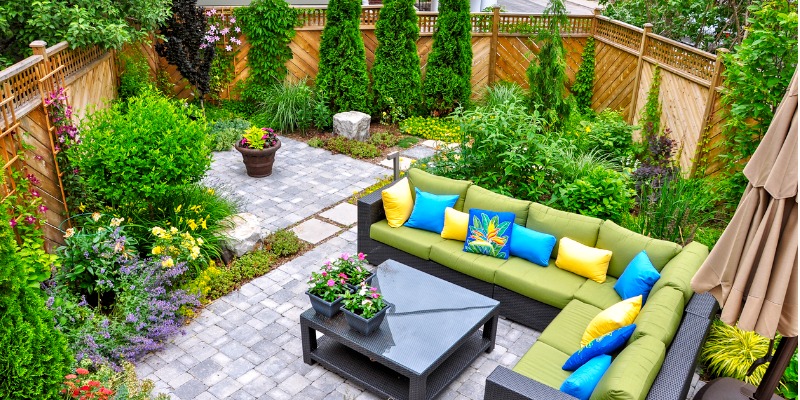
Your outdoor space is your place of peace and relaxation, it mirrors who you are, and allows you to entertain.
And while there are elements of an outdoor landscape design that are standard and perennial year after year, it’s interesting to see emerging trends with each coming new year.
Here, our experts round up the top landscaping trends we expect to see in gardens across Ontario.
Outdoor Space as an Extension Of Your Home
Landscapes are quickly becoming an extension of our homes and personalities, serving every need and desire with furniture, appliances, and more.
The most popular addition to these “outdoor living rooms” is stonework and fire pits.
Stone seating is ideal for hosting because it offers plenty of seating space surrounding your fire pit, Jacuzzi, or table.
This year, look out for:
- Full service kitchens and bars, including grills, ovens, and televisions
- Fireplaces and fire pits designed for entertainment purposes
- Area for relaxation and play, like a space for yoga or an open lawn area for family activities
Soothing Water Features
Your outdoor space is a place that is uniquely you, a place where you can relax and play.
What better way to do that than to incorporate water features?
Whether you have a pool, Jacuzzi, water fountain, or pond, it’s safe to say water and backyards go hand in hand.
Water features, like ponds, waterfalls, rivers, or stone fountains, beautifully awaken any landscape and promote a soothing and serene lifestyle.
Sustainable, Eco-Friendly Designs
There is a renewed interest in environmentally conscious designs, and all of us at Lawrence Park Complete Garden Care are excited about that.
Garden designs that use eco-friendly methods and sustainable plants to manage your property’s environmental conditions, create a more balanced and organic feel to your landscape.
In recent years, we’ve become pioneers in several new areas that hold enormous promise for the environment and for the future of urban landscaping and gardening.
These innovative, sustainable and eco-friendly designs include:
- Green roofs
- Green walls, living walls and food walls
- Living playgrounds
Adding one of these environmental sustainability projects to your landscape will do good for the environment and for your home and well-being.
Ready to transform your landscape?
We love helping homeowners throughout Toronto’s finest neighbourhoods transform their outdoor living spaces.
When you’re ready to create your dream landscape, contact us and request a consultation.

